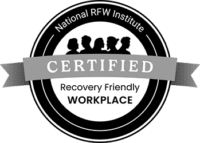Skilled Nursing Facilities: Improving Patient Communications to Improve Transitional Care
In recent years, technological advancements have been created to help create a smooth transition plan and encourage rapid recovery within Skilled Nursing Facilities (SNFs). By improving communication with patients, studies show progress in transitional care. Some examples:
Hutchinson Regional Medical Center, Kansas
Hutchinson Regional Medical Center in Hutchinson, Kansas has significantly reduced length of stay, emergency department visits, and ambulance calls for patients with pulmonary conditions by implementing a chronic disease management program.
Led by a multidisciplinary team, this program focuses on transitioning patients with respiratory diagnoses out of the intensive care unit to a pulmonary unit, as well as providing consistent, comprehensive education to patients and families. Nurses follow up with patients at home, and occupational therapists teach energy conservation techniques to patients in the home setting. After the center began participating in the program, readmissions decreased by 51% for patients enrolled in the pulmonary care transitions program*.
St. Agnes Hospital, Maryland
St. Agnes Hospital in Baltimore, Maryland has one of the country’s highest readmission rates. In coordination with Health Care Access Maryland (HCAM), a not-for-profit organization, the hospital launched a readmission reduction program that can be implemented for 30, 60 or 90 days at point of discharge, for St. Agnes’ five highest readmission conditions over the past 10 years. Their program includes condition-specific education, follow-up visit and medication reminders, and promotion of local healthcare resources including transportation needs – delivered by SMS text or email messages with links to web pages.
To learn more about this program, click here.
Baylor Scott & White Health, Texas
Baylor Scott & White Health in Dallas, Texas is improving medical management in skilled nursing facilities to reduce hospital readmissions. Its primary intervention is using and maximizing the employed physician model in local SNFs, a project that emerged from a partnership with the TMF Health Quality Institute (the local quality improvement organization) and the SNFs. Within six months, changes in medical management led to a 3% reduction in readmission rates for the local SNFs*.
All three of these cases leverage technology and regular communications to improve patient transition to the home. Many of these patients are seniors who have caregivers or family members that are involved in their post-discharge care but have not been integrated into their provider’s plan-of-care or community of home-based care. These caregivers are extremely impactful in patient recovery, when they can be involved as an integral part of the care community.
With GoMo Health’s Concierge Care, caregivers and family members are included in post-discharge communications, health education and crucial reminders. It not only empowers them to be more involved, but provides a better understanding of daily issues and relevant topics for patient-caregiver discussions.
We know from our own client successes that technology and communications helps patient care plan adherence, recovery and reduces readmission.
Experience Concierge Care Solutions First-Hand
For more information on the GoMo Health Concierge Care® solutions, click the button below to request a demo.
*Hospital & Health Networks, 10-26-16







Find Us Online